#Entartete Kunst
Explore tagged Tumblr posts
Text
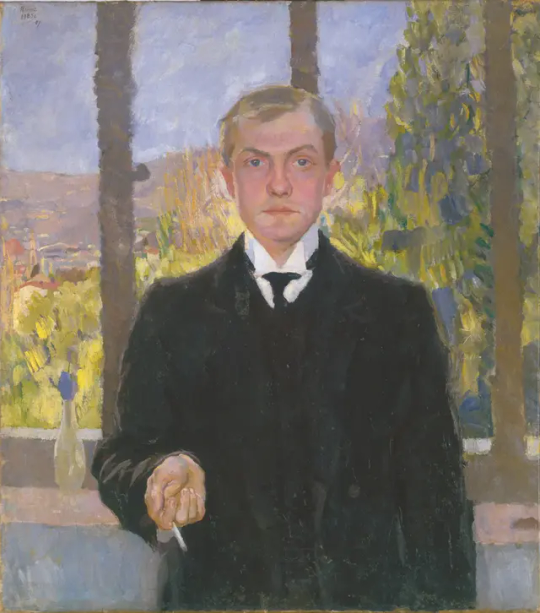
Max Beckmann Selbstporträt 1907
203 notes
·
View notes
Text
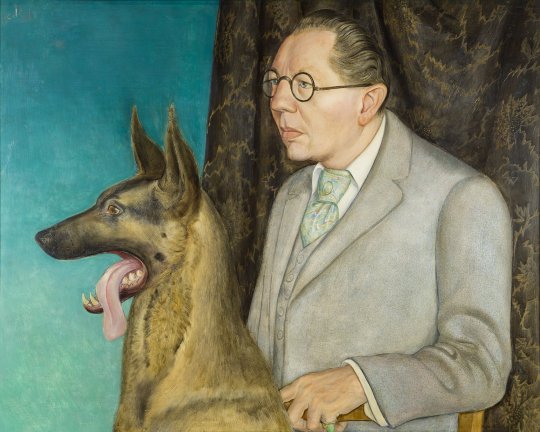
Otto Dix - Portrait of the photographer Hugo Erurth with german shepherd dog, 1926.
44 notes
·
View notes
Text

source: @degenerarts
Karl Wiener, Self-portrait with women and skull. Larger image, here.
7 notes
·
View notes
Video
youtube
Degenerate Art: The Fate of the Avant-Garde in Nazi Germany - via @flommus
#nazi#art#fascism#history#art history#avant garde#david grubin#degenerate art#entartete kunst#that didn't age well
11 notes
·
View notes
Text
entartete kunst
Stop using the word degenerate to mean horny challenge
36K notes
·
View notes
Text

Otto Dix
Otto Dix lived and painted in Pontresina in the winter of 1937/38, as an exhibition in the Graubünden Art Museum now shows. He radically changed his style in the 1920s; the expressionistic-dystopian pictures from the Weimar Republic are history.
#otto dix#bernina glacier#engadin#larch#Lärche#painting#art#kunstwerk#entartete Kunst#inspiration#landscape
0 notes
Text

I'm sorry for making other people see this but man this is such a good example of like, seeing what you look for? I don't see people talk about girldick very much but I see plenty of vagina art, both online and irl, I'd say we live in a period (haha) of the most vagina art ever! When has there been more vagina art??? I went to a feminist Christmas market last year and they had vulva-shaped ornaments with pearls as clits! My girls and I were like wow so cool we should get ourselves some clay and make yonic jewellery!
Likewise, a big trend I see all the time are those bags with an assortment of drawings of realistic tits, big and small, perky and saggy, clearly feminist art focused on normalising the naked female body, carried by women. This is such a huge thing!
But when you spend all your time on social media looking for things you dislike I guess you miss out on all that? Please you don't have to live in a tar pit, come live in the beautiful future with the rest of us
#also unironically using the word 'degenerate'... wow#wanna talk about entartete kunst next#talking#transphobia cw
6 notes
·
View notes
Text
Ihr Wesen und ihre Werke (The art of the Germans. Its nature and its works) and Kunst und Rasse (Art and Race), the latter published in 1928, in which he argued that only racially pure artists could produce a healthy art which upheld timeless ideals of classical beauty, while racially mixed modern artists produced disordered artworks and monstrous depictions of the human form. By reproducing examples of modern art next to photographs of people with deformities and diseases, he graphically reinforced the idea of modernism as a sickness.
[...]
Art historian Henry Grosshans says that Hitler "saw Greek and Roman art as uncontaminated by Jewish influences. Modern art was [seen as] an act of aesthetic violence by the Jews against the German spirit. Such was true to Hitler even though only Liebermann, Meidner, Freundlich, and Marc Chagall, among those who made significant contributions to the German modernist movement, were Jewish. But Hitler ... took upon himself the responsibility of deciding who, in matters of culture, thought and acted like a Jew." The supposedly "Jewish" nature of all art that was indecipherable, distorted, or that represented "depraved" subject matter was explained through the concept of degeneracy, which held that distorted and corrupted art was a symptom of an inferior race. By propagating the theory of degeneracy, the Nazis combined their antisemitism with their drive to control the culture, thus consolidating public support for both campaigns.
[...]
There were slogans painted on the walls. For example:
Insolent mockery of the Divine under Centrist rule
Revelation of the Jewish racial soul
An insult to German womanhood
The ideal—cretin and whore
Deliberate sabotage of national defense
German farmers—a Yiddish view
The Jewish longing for the wilderness reveals itself—in Germany the Negro becomes the racial ideal of a degenerate art
Madness becomes method
Nature as seen by sick minds
Even museum bigwigs called this the "art of the German people"
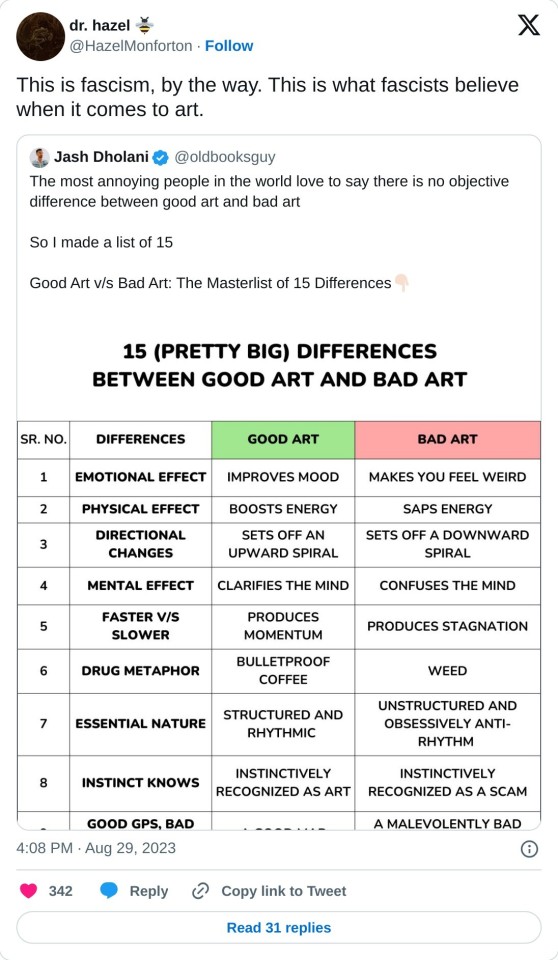

Tag yourself as this list of “bad art” features, according to a twitter fascist
76K notes
·
View notes
Text
Hey Guys wanna See a chart i found on Twitter?

#idk man#look what the cat dragged in#<-decided i'll be using this tag for stuff i found from now on#do you think if you introduced this guy to the concept of entartete kunst without telling him where it came from he'd gobble that shit up?
0 notes
Text

George Grosz - Punishment (Strafe), watercolor, 1934.
51 notes
·
View notes
Text

Make Autodafé Great Again !
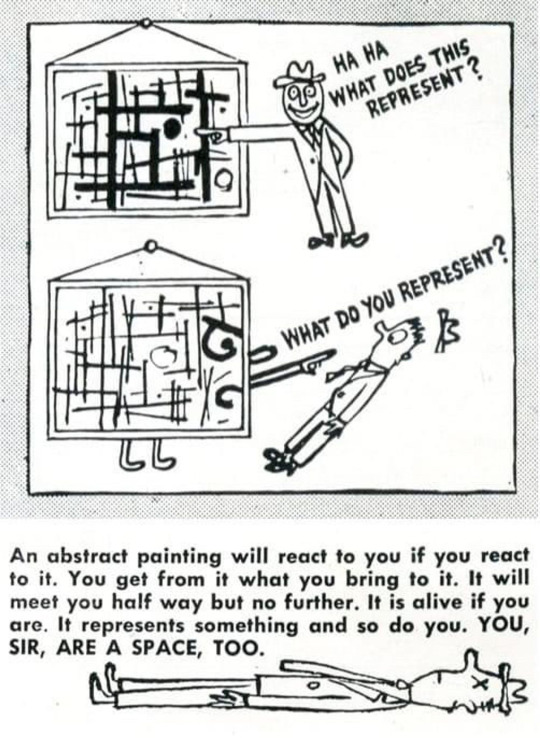
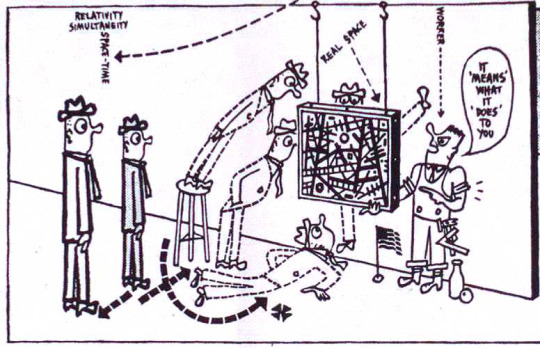
Excerpts from a six page comic titled "How to Look" published in Arts & Architecture, January 1947
By Ad Reinhardt
3K notes
·
View notes
Text

Otto Dix Kriegskrüppel (War Cripples) 1920
The Otto Dix painting, "Kriegskrüppel," was purchased by a German museum shortly after it was originally displayed. After the Nazis came to power, they pulled it, and many other works of art they had disdain for, out of the museums. Some of those artworks they found most distasteful were displayed in the infamous "Entartete Kunst" (Degenerate Art) exhibit, which toured German cities in 1937. These artworks were displayed in such a way that the Nazis hoped they would encourage broad social revulsion for modern art, which they considered Jewish, Bolshevik and otherwise antithetical to the new "German" spirit they were trying to instill in people. Many of the displayed artworks, Kriegskrüppel inscluded, disappeared after the Entartete Kunst exhibit closed, and it's assumed the fascists destroyed them. Kriegskrüppel is known only from a few prints made in the image of the original painting.
98 notes
·
View notes
Note
"The people who would get pissed off at Duchamp’s fountain are a very specific demographic!!!! Namely fascists!!! Like the implication of a statement like that is actually absurd. who is the fascist in this analogy, 25 year old nonbinary artists??"
"25 year old nonbinary artists" (nice appeal to identity, lol) are literally agreeing with fascists about what constitutes "real art" when they start talking about the "purity" or "soul" of a piece and assigning spiritual value based on the human who created it, yes. this doesn't make them fascists (great reading comprehension!), but it does mean they agree with fascists on a core tenet of their ideology. i really don't understand how you can correctly identify the link between "fascists" and "claiming Duchamp's readymades weren't art", but not understand the link between the latter and disliking Gay Sex Cats. "it's not really art, it was made for them, they just went out and bought it pressed a button" time is a flat circle
what the hell are you talking about. it’s a core tenet of fascist ideology to get misty eyed about art having a soul???
You don’t see how a comparison between violent rejection of degenerate art at the start of the century, the Entartete Kunst and destruction of modern art galleries BY fascists as a direct motivator for the creation of the Fountain, and like, a largely poor, overwhelmingly minority group of workers asking ppl to reject the use and normalisation of a technology that is going to push them out of a job, being more than a little ridiculous???
Like you can say I’m “appealing to identity” all you want but I’m not wrong, and it’s a galling misunderstanding of why fascism treats modern art the way it does. It has always been a reactionary attack on queer, nonwhite, non-european, degenerate self-expression. The rejection of gay sex cats is a call for solidarity and asking ppl to stop being a fucking scab. jesus christ.
88 notes
·
View notes
Text
Uneven couple (Pareja desigual), Otto Dix, 1925. "Entartete Kunst"

98 notes
·
View notes
Note
Okay, the aformentioned second post:
1, In Cockatiel x Chameleon, there's no credits page, unlike with your other works. Do you have any list of chapter title credits somewhere? I'd be curious on that, I recognise a few of them.
2, In Chicago, you depict a group of magical girls plotting to overthrow the US government. As this was published in 2018-19, I assume you had access to depict Donald Trump as the sitting President, but you chose to set it during Obama's presidency instead. Any specifics reasons for that? Did you just want it to be in 2013-14 for other reasons and that was collateral?
3, I see you have read the Magical Girl Raising Project novels (and the anime, but I prefer the novels over the anime lmao). What are your thoughts on them? Which point have you gotten up to? Did you know that they're fully complete and released in official English now? I'm a big fan and they're pretty obscure overall when compared to other stuff, so I was surprised to see you cite them in one chapter title of yours.
4, Finally, do you have any solid plans for your next book after When I Win the World Ends?
Most of the chapter titles are original. Two, Me!Me!Me! and FOR THE LOVE OF GOD, are references, but those references are glossed within CxC itself by Gramme's footnotes. For the other chapter titles that are references:
Moneymoneymoneymoneymoneymotherfuckers is from this Aesop Rock song.
The two titles that start with "Harper goes to Hell" are modeled on the 1993 film Jason Goes to Hell: The Final Friday.
Entartete Kunst is a reference to the Nazis' degenerate art exhibit.
HELL OF SWALLOWED?! is the title of a series of snake vore hentai doujins. (I will not be linking to this.)
The title of Part I, Nothing to Nothing, is a reference to a quote from King Lear: "Nothing will come of nothing: speak again." Part III, End of History, is a reference to the 1991 essay by Francis Fukuyama.
While not exactly a reference, "Teatime witches who sneer at the uninitiated" is meant to evoke Umineko.
"Trees part; an idol emerges: She" evokes She by H. Rider Haggard, and more specifically the reference to She in Stephen King's Misery.
"Scrape of the cane" is modeled on the Homestuck song Swing of the Clock.
"Welcome to a land of magic" is a slightly altered quote from the first volume of Magical Girl Raising Project (more on that later this ask); the actual quote is "Welcome to a world of dreams and magic."
Other references, like those to Persephone or the Soviet Union, are probably well known enough to not require a gloss.
2. Two reasons. First, Fargo was set in 2013, the height of the Williston shale oil boom that is central to Fargo's first arc. (I also started writing Fargo in 2015, when 2013 was close enough that it basically seemed like the same time period.) Chicago is set immediately after Fargo, and even has some returning characters like Cicero. If I really wanted to, I probably could have stretched Chicago's setting to the Trump era, but the second reason I didn't was to give it some political distance from the Trump administration. Chicago is in many ways a product of the Trump years, but I didn't want the story to get bogged down in the swamplike minutiae of Donald Trump himself, and all the very charged political and aesthetic associations he carries. There's a reason there wasn't a single good Trump parody made during the time Trump was actually in office, and I did not consider myself up to the task of changing that trend. Beyond just that, there's something archetypally "presidential" about Barack Obama from a purely aesthetic standpoint that makes him a fitting stand-in for the United States political system as a whole. If the final chapter of Chicago involved Donald Trump giving a "return to normalcy" speech instead of Barack Obama, it would be a far different vibe, regardless of how you feel about either of those figures politically. (Also, throughout the entire time writing Chicago, I had that video of Obama wielding the Chaos Emeralds in my mind.)
3. I'm a major fan of Magical Girl Raising Project. I even wrote an essay that compared it to Madoka Magica. I am fully caught up on the series and own every book, as my updated magical girl shelf shows:

I got into the series through the anime, which adapts the first book in the series plus some side material from the fourth book, and I got into the rest of the series through my friend PlatFleece, who did a bunch of fan translations of the books before Yen Press made official releases. I actually really love the anime, though it's in some ways not fully indicative of the rest of the series. The anime is basically a magical girl battle royale, and it's one of the few battle royales that actually understands the core appeal of the genre. I'm totally annoyed by fake battle royales like Hunger Games or Mirai Nikki that are, in actuality, simply a series of challenges for the main character to overcome, with side characters virtually not mattering beyond their interactions with the lead. To me, a true battle royale should be an ensemble, and one that really surprises you with which characters die and in which order; any battle royale that follows a typical progression of killing off characters in order of irrelevance is a complete failure of the genre. The anime of Magical Girl Raising Project is excellent at not only surprisingly killing off major-seeming characters early on, but also having seeming cannon fodder characters make deep runs with unexpected impact on the whole affair. That's exactly what a battle royale should be like.
What's impressive about Magical Girl Raising Project as a series is how it continually reinvents itself with each arc. The first arc is a battle royale, the second arc is a murder mystery, the third arc is a season of 24 (this is the best arc, and the one I took the Cleveland Quixotic chapter title from), the fourth arc is a survival horror, and so on. And over the course of these arcs, the series gradually develops this fascinating world that is kafkaesque and bureaucratic in nature, with a labyrinthine magical girl government divided into endless departments and political factions. Magical Girl Raising Project is unique among dark magical girl series in that there is nothing innately bad about being a magical girl; you're not doomed to die like in Madoka or punished for using your powers like in Site or Yuuki Yuna. Being a magical girl gives you no-downsides superpowers and even increases your lifespan (there are some characters who have been alive since Victorian England), and the government's intended purpose for creating magical girls is simply to help people. The series is interesting in how it indicates spectacular consequences of fairly humdrum bureaucracies and political systems acquiring the power of magical girls; most conflicts, especially from the third arc on, are caused by government factions playing chess games for power, and most of the recurring antagonists originally sought to reform the government before themselves getting mired in and corrupted by its political games.
Of course, it's also a character meat grinder, fully willing to kill off characters both minor and major, even load bearing characters who drastically warp the status quo via their absence, and that's something else I really like. There's a hilarious tug of war between the series' author and illustrator, the former writing the story before the character designs have been created, and the latter consistently giving some of the best and most interesting designs to the characters who get axed first.
It's unfortunate the series isn't more popular and got really unfairly kicked into the "Madoka Magica ripoff" bucket by undiscerning critics (it's really nothing like Madoka beyond the basic idea of dark magical girls). Chicago is in many ways a stealth Magical Girl Raising Project fanfic, with its focus on government and bureaucracy, as well as its "harder" magic system. Even Clownmuffle's name is very MagiPro-esque.
4. I'm already hard at work on 1 Over X, my next story. Yesterday I finished the rough draft of my outline for it, so I will probably start writing within a month or so. It's a horror story set at an elite all girls boarding school in New England, where the richest of the rich attend. The story begins as four girls sneak out of the school to attend a Halloween party...
#bavitz#cockatiel x chameleon#chicago#magical girl raising project#magipro#mgrp#1 over x#cindersfall
12 notes
·
View notes